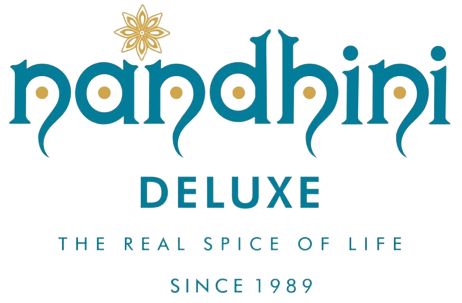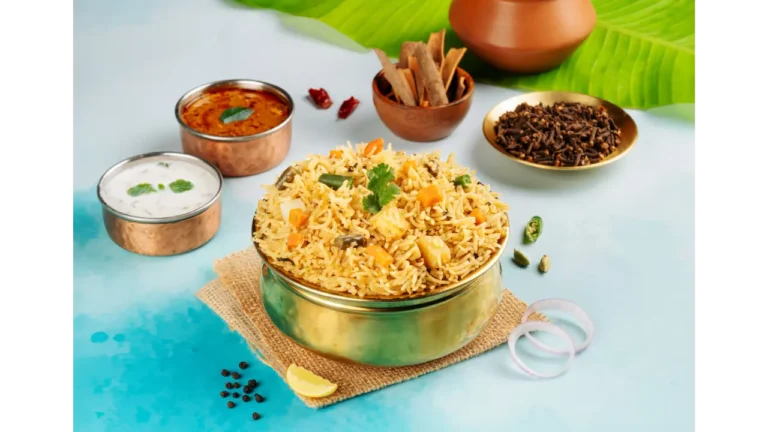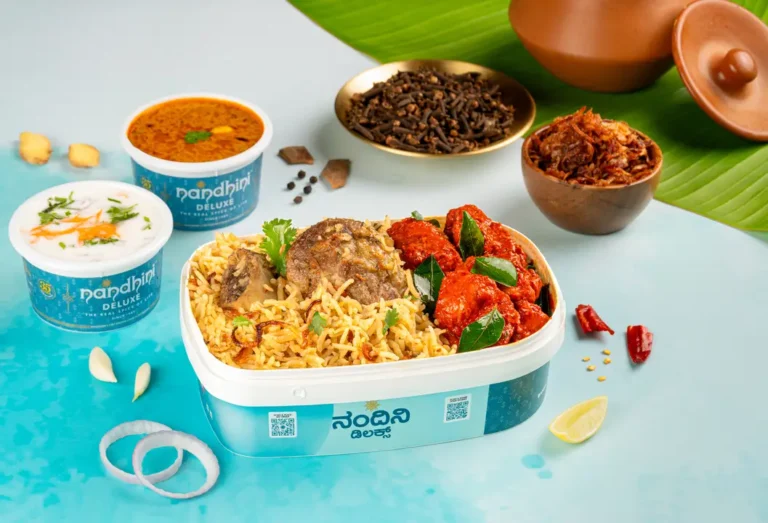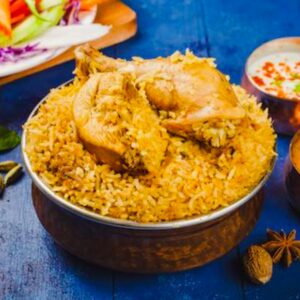Introduction
When someone mentions “Andhra Meals,” they’re not just talking about food—they’re referring to an entire experience. Rooted in centuries of tradition, a typical Andhra meal is a thoughtful arrangement of flavors, textures, temperatures, and nutrition. It is not a random collection of dishes, but a deeply structured eating ritual designed to nourish the body and satisfy the soul.
From the spicy kick of Gongura pachadi to the smooth comfort of Pappu over steaming hot rice, every bite carries a story of climate, soil, spice trade, dynastic culinary influences, and Ayurvedic logic. Unlike generic South Indian thalis, Andhra meals are bold and layered, often featuring stronger spice levels and more fermented, protein-rich, and tangy elements.
Whether enjoyed at a traditional family gathering or in a restaurant like Nandhini, where these classics are crafted with precision, Andhra meals give you a complete gastronomic arc—from starter to sweet.
In this guide, we’ll take you through every major component of a true Andhra meal from Pappu to Podi, from everyday staples to rare regional gems, so you can appreciate it like a local (and order it like one too!).
Anatomy of a Classic Andhra Meal
An authentic Andhra meal follows a rhythm. Unlike Western meals with defined courses, here the structure is intuitive and often seasonal. But there are core elements that appear in every traditional Andhra meal, especially in a formal thali, wedding banana-leaf setup, or curated restaurant version like at Nandhini Restaurants.
Let’s break it down:
1. Pappu (Lentil Stew)
- Always present. Acts as the protein base.
- Common types: Tomato pappu, Palak pappu (spinach), Mango pappu during summer, and Kandi pappu (plain toor dal).
2. Charu or Rasam
- Spicy, thin tamarind broth with pepper, garlic, and tomatoes. Aids digestion and balances heavy components.
3. Koora/Kura (Vegetable or Meat Curry)
- Dry or semi-wet curries like bendakaya vepudu (okra fry), gongura mutton, or aloo tomato kura.
4. Podi (Spiced Powders)
- Dry mixes like Kandi podi (toor dal & spices), Karivepaku podi (curry leaf powder). Eaten by mixing with hot rice and ghee.
5. Pachadi & Ooragaya (Chutneys & Pickles)
- Pachadis are freshly ground, often made with vegetables, greens, or curd.
- Ooragaya refers to fermented pickles, like the iconic Avakaya or Gongura pickle.
6. Rice + Ghee
- The anchor. All flavors—podi, pappu, or rasam—ultimately come back to rice.
7. Sides & Coolants
- Deep-fried papad, curd, buttermilk, raw onions, and green chilies are served to balance the spice.
8. Sweet Finish
- Often seasonal: Boorelu, Pootharekulu, Payasam, or Junnu (milk pudding).
Optional:
- Millets & Ragi Sangati in Rayalaseema regions
- Pulihora (tamarind rice) or Daddojanam (curd rice) as finishers
Pappu – The Heart of the Andhra Meal

Ask any Andhra local what makes a meal “feel like home,” and the answer will likely be one word: Pappu. This slow-cooked lentil stew is the centerpiece of most Andhra meals—simple, nutritious, and endlessly comforting.
Unlike the generic “dal” served across India, Andhra-style pappu is richer, thicker, and heavily influenced by the ingredients available across seasons. It’s also one of the most customizable dishes—every family has its version, and every restaurant brings its twist.
Common Varieties of Pappu:
- Tomato Pappu – A crowd favorite, tangy and balanced, often made with toor dal and a hint of green chilies.
- Palakura Pappu (Spinach Dal) – Nutrient-dense, mildly spiced, great with hot rice and a spoonful of ghee.
- Mango Pappu – Seasonal favorite made with raw mango chunks. It’s tangy, spicy, and utterly addictive.
- Kandipappu (Plain Toor Dal) – The base dal is often mixed with podi or pickles for a simple yet satisfying bite.
Flavor Profile:
- Spiced using mustard seeds, curry leaves, dried red chilies, cumin, garlic, and sometimes asafoetida.
- Finished with a hot ghee tadka that elevates its aroma instantly.
How It’s Served:
- Usually ladled generously over steamed rice.
- Best enjoyed with a drop of ghee, a side of Avakaya (mango pickle), and fried papad.
At Nandhini:
At Nandhini Restaurants, Tomato Pappu and Palakura Pappu are staples in their Andhra meal thalis. They’re slow-cooked for flavor depth, served hot, and seasoned just right—not too overpowering, not too bland.
Charu – Tang and Heat in a Bowl
If Pappu is the comforting heart of the meal, then Charu is its bold, zingy soul. Also known as Andhra Rasam, Charu is a spiced tamarind broth that plays a dual role: it cleanses the palate and kickstarts digestion.
What Sets Charu Apart:
While Tamil or Karnataka rasam tends to be thinner and more pepper-heavy, Andhra Charu often leans tangier, with stronger tamarind notes, garlic flavors, and more chili punch. It’s meant to wake up your taste buds, especially when served after the heavier pappu and koora.
Popular Variants:
- Tomato Charu – Made with ripe tomatoes, tamarind pulp, black pepper, and coriander.
- Menthi Majjiga (Fenugreek Buttermilk Rasam) – A rare but cooling version using buttermilk and methi seeds.
- Nimmakaya Charu (Lemon Rasam) – A bright, citrusy rasam ideal for soothing a spicy meal.
Common Ingredients:
- Tamarind, black pepper, garlic, mustard, green chilies, hing (asafoetida), and coriander.
- Finished with a quick tempering in ghee or sesame oil.
Serving Tip:
Charu is usually poured over a small portion of rice toward the end of the meal. It can also be sipped like a soup, especially during colder seasons or when you’re under the weather.
At Nandhini:
Nandhini Restaurants includes Tomato Charu in most of its Andhra thali menus. It’s tangy, aromatic, and expertly balanced—not too watery, not overly spicy. Regulars love pairing it with plain rice, a papad, and a spoonful of ghee for a perfect last bite.
Koora – Andhra’s Wide World of Curries

Koora, or Kura, is the general term for curry in Telugu cuisine. But don’t mistake this for a single dish—Andhra meals often include multiple types of koora, each with its own preparation style, spice level, and purpose on the plate. It can be dry (vepudu), gravy-based (pulusu), or even steamed and spiced (kobbari kura). This variety brings balance, contrast, and nutrition to every Andhra thali.
Main Styles of Koora:
- Vepudu (Dry Fry)
- Stir-fried in oil with mustard seeds, curry leaves, and crushed garlic.
- Popular picks: Bendakaya vepudu (okra fry), Aratikaya vepudu (raw banana), Kodi vepudu (chicken fry).
- Pulusu (Tamarind-Based Gravy)
- Sour and slightly sweet, pulusu uses tamarind pulp as a base.
- Often includes vegetables like pumpkin (gummadikaya), brinjal, or even fish.
- Kobbari Koora (Coconut Curries)
- Ground coconut forms the base for mildly spiced gravies.
- Great with ridge gourd, cabbage, or bottle gourd.
- Egg & Non-Veg Kura
- Dishes like guddu pulusu (egg curry) or gongura mutton bring meat into the mix, common in the Rayalaseema and Coastal Andhra regions.
Cooking Techniques:
- Use of roasted spice pastes, onion-coconut masala, and even ground sesame, depending on the dish.
- Often finished with curry leaves and a splash of ghee or coconut oil for aroma.
At Nandhini:
Nandhini Restaurants serves a rotating selection of Koora depending on the day’s thali. Favorites include Bendakaya vepudu, Aloo tomato kura, and seasonal pulusu options. Their Kodi Vepudu is a customer favorite: crispy, well-spiced, and rich without being greasy.
Podi – The Secret Power of Andhra Meals
In Andhra cuisine, Podi isn’t a side note—it’s a power move. These spiced lentil-based powders are dry, shelf-stable, and packed with flavor. They are usually eaten by mixing with hot rice and ghee, often replacing heavier curries for a quick and satisfying meal.
Podi is especially important in daily home meals, but its role is finally getting noticed in restaurant-style thalis as well, thanks to its intense flavor and convenience.
Most Popular Andhra Podis:
- Kandi Podi (Toor Dal Powder)
- Made from roasted toor dal, garlic, cumin, and red chilies. Nutty, spicy, and deeply aromatic.
- Karivepaku Podi (Curry Leaf Powder)
- High in iron and antioxidants. Great with rice and ghee or sprinkled over idlis.
- Nuvvula Podi (Sesame Seed Powder)
- Milder and slightly sweet, used to complement spicy pickles or pulusu.
- Allam Podi (Ginger Powder)
- Used more sparingly, it has digestive benefits and is popular in monsoons or winter.
How It’s Used:
- Podi is mixed with ghee or sesame oil and eaten over plain rice.
- Also used as seasoning on idlis, dosas, or even bread toasts for a spicy crunch.
At Nandhini:
A spoonful of freshly ground Kandi Podi is always part of the experience at Nandhini Restaurants. Customers often rave about it because it tastes homemade, not factory-processed. It adds a layer of depth to the meal, especially when combined with hot rice, ghee, and a crispy papad.
Pachadi & Pickles – Tangy Stars of the Plate
In Andhra cuisine, flavor is never one-dimensional. While pappu and koora provide richness and body, it’s the pachadis and ooragayalu (pickles) that provide the punch—bright, tangy, spicy, and deeply regional. These side items may be small in quantity, but their impact on the meal is huge.
What Is Pachadi?
Pachadi refers to a freshly ground chutney, usually made with seasonal vegetables, greens, or even curd. Unlike North Indian chutneys, Andhra pachadis are thicker, chunkier, and often tempered with mustard seeds and garlic.
Common Pachadi Types:
- Gongura Pachadi – Made with red sorrel leaves; tangy, sharp, and iconic to Andhra.
- Tomato Pachadi – Roasted tomato, chili, and garlic mash with tamarind.
- Dosakaya Pachadi – Yellow cucumber-based chutney, mildly sour and refreshing.
- Daddojanam Pachadi – Curd-based chutney, cooling and balanced.
Pickles (Ooragayalu):
Andhra’s pickles are legendary. Unlike the oily, shelf-stable varieties elsewhere, these are often fermented at home, bursting with salt, chili powder, mustard, and time-aged flavor.
Signature Andhra Pickles:
- Avakaya – Raw mango with mustard, chili, and oil.
- Gongura Pickle – Sorrel leaves, red chilies, garlic.
- Usirikaya Pickle – Indian gooseberry-based, high in vitamin C.
How They’re Served:
- A teaspoon of pickle or pachadi accompanies each rice course.
- Often mixed with hot rice, ghee, or curd for a tangy bite.
At Nandhini:
Nandhini Restaurants is known for its house-made Gongura Pachadi and Avakaya, made fresh in small batches to preserve taste and authenticity. Customers love pairing it with hot rice and pappu, or even just podi and ghee.
Sides & Sweet Endings – Completing the Andhra Meal Experience
Every Andhra meal follows a deliberate arc: it starts with pappu and koora, moves through tangy charu and podi, and ends with cooling sides and a touch of sweetness. These final touches aren’t afterthoughts—they bring balance, aiding digestion and finishing the meal with grace.
Common Sides:
- Perugu (Curd) – Served plain or as daddojanam (curd rice with tempering).
- Majjiga (Buttermilk) – Spiced with curry leaves, green chili, and ginger.
- Vadiyalu / Appadam (Papad) – Crispy sun-dried rice or dal fritters, deep-fried before serving.
- Ullipayalu (Raw onions) and Mirapakaya (Green chilies) – Served raw for contrast.
These sides are more than just tradition—they offer a functional cooling counterpoint to the heat of Andhra spices.
Sweet Endings:
- Pootharekulu – Delicate paper-thin sweets made with rice starch, sugar, and ghee.
- Boorelu – Deep-fried balls filled with jaggery and dal paste.
- Payasam – Kheer made from rice, vermicelli, or millets.
- Junnu – Steam-set milk pudding with jaggery, found in festive meals.
At Nandhini:
A classic thali at Nandhini Restaurants usually ends with a serving of curd rice and papad, followed by a seasonal sweet. Their Boorelu and Payasam options rotate weekly, offering variety and tradition in every bite.
How to Eat an Andhra Meal – The Ritual & Rhythm
One of the most beautiful things about an Andhra meal is not just what is eaten, but how. The sequence and structure of the meal aren’t random; they’re rooted in digestion science, cultural logic, and the sensory crescendo of tastes. Understanding this ritual helps diners—especially new ones—get the most out of the experience.
The Traditional Order:
- Start with Plain Rice + Ghee + Podi
- This combination sets the tone with umami and richness. A mild spice blend like Kandi Podi or Karivepaku Podi is ideal here.
- Move to Pappu
- Lentil stews like Tomato Pappu or Palakura Pappu bring protein and savory comfort. Usually eaten with rice and a bit of pickle or pachadi on the side.
- Add Koora (Dry Curry)
- Dry-fried vegetables or Kodi Vepudu are added to the plate. The rice is still the base, now layered with more texture.
- Pulusu or Wet Koora Comes Next
- Tamarind-based gravies or coconut curries enter here, either mixed with rice or eaten separately.
- Follow Up with Charu (Rasam)
- A thin tamarind-pepper broth, charu, clears the palate and helps digestion.
- Cool Down with Curd or Buttermilk
- Either plain curd, curd rice (daddojanam), or a sip of spiced majjiga.
- End with a Sweet
- Something seasonal, light, and satisfying. Pootharekulu, Payasam, or Boorelu, depending on the occasion.
Etiquette Tips:
- Traditionally, food is eaten with the right hand, mixing rice and curries on the plate.
- Water is sipped, not gulped, between courses.
- The meal finishes with a small belch, which is seen as a sign of satisfaction (not rudeness!).
Understanding this flow ensures not just a full belly, but a well-balanced, satisfying experience that respects the tradition of Andhra Bhojanam.
Restaurant Adaptation Guide – How Nandhini Serves Andhra Meals Today
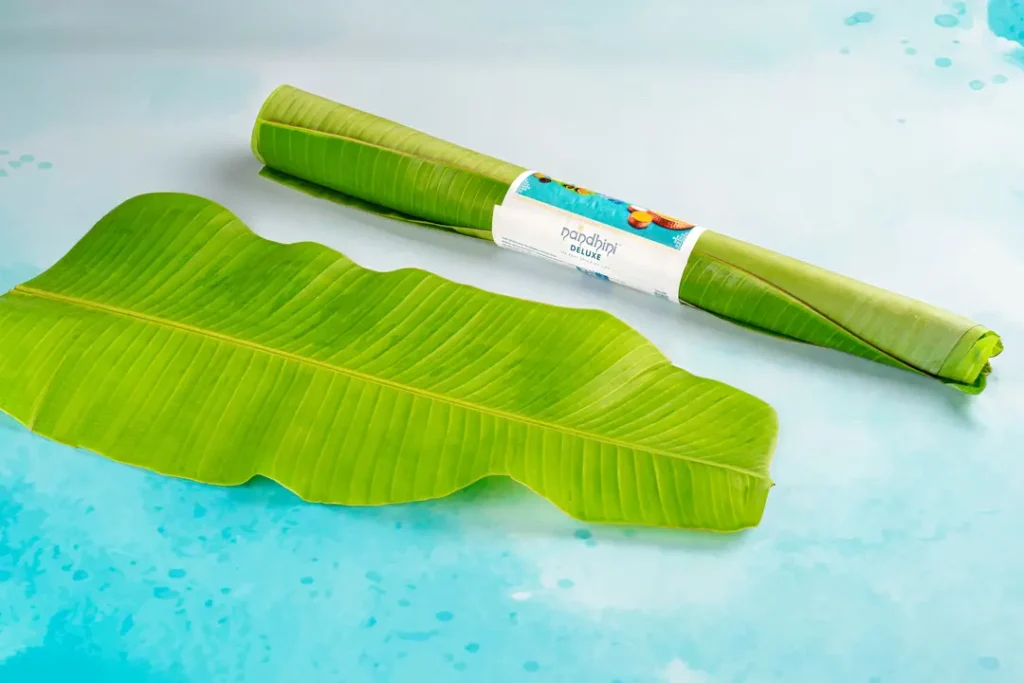
Recreating the authenticity of a home-cooked Andhra meal in a restaurant setting is no small feat, but Nandhini Restaurants does it with consistent finesse.
Here’s how we’ve adapted the traditional Andhra meal structure to suit modern dining expectations, without losing the essence:
1. Curated Andhra Thali Format
- Our thalis are designed to follow the natural flow of an Andhra meal: podi rice, pappu, koora, pulusu, rasam, curd, and sweet.
- Vegetarian and non-vegetarian options available—each crafted with the same base structure and flavor order.
2. House-Made Podi & Pickles
- Unlike commercially packed versions, all our podis (like Kandi Podi) and pickles (Avakaya, Gongura) are made fresh, in-house.
- Served in small quantities for the customer to mix and experience with rice and ghee, just like at home.
3. Rotating Koora and Pulusu
- Based on seasonal vegetables and regional preferences, our daily koora selection changes to ensure freshness and excitement.
4. Meal Presentation on Banana Leaf (for Special Days)
- On festive occasions and weekends, we serve traditional banana-leaf style meals, offering an immersive cultural experience.
5. Balanced Spice & Customization
- While we stay true to Andhra heat levels, we also allow spice customization for newer diners or families with children.
6. Curated Sweet Section
- We end our meals with time-honored desserts like Payasam, Boorelu, or Pootharekulu—rotated weekly for variety.
Whether you’re looking for a nostalgic Andhra thali or introducing someone to the cuisine for the first time, Nandhini offers the full experience, faithful to tradition, yet adapted for modern comfort.
Health & Nutrition Highlights of Andhra Meals
While Andhra cuisine is known for its bold flavors and spice levels, it’s also inherently balanced and nutritionally thoughtful. A traditional Andhra meal isn’t just designed to taste good—it’s built to support digestion, energy, immunity, and even gut health.
Here’s why an Andhra meal is healthier than you think:
- Protein-Rich Pappu
Lentils, like toor dal and moong dal, are high in plant-based protein and essential minerals.
- Fermented & Probiotic Sides
Dishes like curd rice, buttermilk (majjiga), and even pickles promote healthy gut flora and aid digestion.
- Fiber from Vegetables & Koora
Dry curries (vepudu) and pulusu offer a range of vegetables like spinach, okra, bottle gourd, and brinjal—all loaded with fiber and micronutrients.
- Healthy Fats
The use of sesame oil, ghee, and tempered spices brings in healthy fats and fat-soluble vitamins.
- Anti-inflammatory Spices
Ingredients like turmeric, curry leaves, cumin, garlic, and ginger are core to Andhra cooking, each offering medicinal benefits.
- Portion Awareness
Meals are plated with variety, but moderate, small servings of many components keep it satisfying without overeating.
Modern Adaptation at Nandhini:
At Nandhini Restaurants, we carefully source ingredients and prepare all dishes with a balance of flavor and wellness in mind. Our meals are hearty yet not heavy, allowing diners to enjoy spice-forward food without post-meal fatigue or discomfort.
FAQ Section
What is included in a traditional Andhra meal?
An Andhra meal typically includes pappu (dal), charu (rasam), dry and wet curries (koora), podi (spice powders), pachadi, pickles, rice, curd, and dessert.
Is Andhra food always very spicy?
Andhra food is known for its heat, but spice levels can be customized, especially at restaurants like Nandhini, where guest preferences are respected.
What is the difference between Andhra thali and regular South Indian thali?
Andhra thalis are spicier, include more varieties of lentils and podi, and often feature regional pickles like avakaya or gongura.
Can vegetarians enjoy a full Andhra meal?
Absolutely. There are many vegetarian options such as palakura pappu, bendakaya vepudu, dosakaya pachadi, and curd rice with boorelu.
Where can I try authentic Andhra meals in Bengaluru?
You can enjoy complete, authentic Andhra meals at Nandhini Restaurants across Bengaluru, featuring home-style recipes with balanced spice.
Conclusion – From Pappu to Podi, It’s a Journey Worth Taking
An Andhra meal is more than a plate of food—it’s a journey through tradition, geography, and deep-rooted culinary logic. From the first spoonful of podi-mixed rice to the last sip of rasam or buttermilk, every element has a purpose, a story, and a role in creating a harmonious experience.
Whether you’re looking for comfort, complexity, or just a perfectly satisfying meal, Andhra cuisine offers it all—and in no better place than Nandhini Restaurants. We bring the structure, soul, and spice of authentic Andhra meals to every table we serve.
